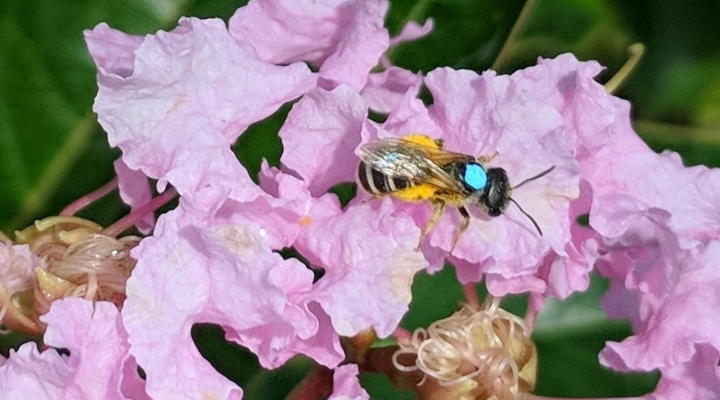By Christine Souza
With a statewide directive now in place for California residents to remain at home to slow the spread of the novel coronavirus and the illness it causes—COVID-19—and with agriculture considered a “critical infrastructure industry” by government agencies, county agricultural commissioners say they are maintaining essential services to facilitate agricultural production, processing and distribution.
“We know the importance of keeping the food supply chain running smoothly and ensuring a steady, safe and healthy food supply. County agricultural commissioners are communicating with their county public health officers to emphasize the full extent of essential services necessary to maintain the critical infrastructure of our food system,” said Sandy Elles, executive director of the California Agricultural Commissioners and Sealers Association.
If a county agricultural commissioner office is closed to the public, she said, phone and email communications will be available to “expedite delivery of services such as issuing phytosanitary certificates, issuing pesticide permits and investigating pesticide complaints or incidents.”
In addition, Elles noted that the state’s agricultural commissioners maintain a strong partnership with the California Department of Food and Agriculture and Department of Pesticide Regulation, and are “calmly working through these challenging circumstances, sharing resources and supporting our joint efforts to sustain our state’s robust agricultural production.”
DPR Director Val Dolcini agreed, saying, “Farms don’t close down in times of crisis and we’ll make sure that we’re doing everything we can to ensure that our food supply is safe, and that food production continues unimpeded.”
Merced County farmer Aaron Barcellos said the health and safety of his employees is his primary concern as his Los Banos-area farm concludes asparagus harvest and transitions to planting processing tomatoes. Barcellos said he is taking additional steps.
“We added a bunch of preventative measures, such as having employees clock in at separate times and staggering break times and meal periods, so we don’t have too many people gathered in one place at any one time,” he said. “We also provided letters to all of our employees, stating that they’re part of the agricultural sector working for us, so that they have reassurance that they can go to and from work.”
Barcellos said he has received all of the necessary permits from his local agricultural commissioner and he has conducted the required safety trainings with employees. A potential concern among farmers, he said, is ensuring an adequate supply of personal protective equipment, or PPE, such as N-95 respirators, Tyvek suits and other required equipment used by people applying crop-protection materials.
“We have a little bit of supply on stock, but you can’t find any replacement equipment right now. We’ve been looking all over the internet and talking to most of our local suppliers, and we can’t find anything,” Barcellos said.
San Joaquin County farmer Bryan Van Groningen, who began planting watermelons last week near Manteca, said he also is concerned about acquiring PPE equipment—recognizing that masks and other equipment are also essential for medical personnel and first responders. Van Groningen said he has a three-month supply of PPE and is investigating where to find more before the supply runs out, which could be at a time when farm activities will be busier.
Bryan Little, chief operating officer of the Farm Employers Labor Service, an affiliate of the California Farm Bureau Federation, confirmed that many crop protection chemicals farmers use “require use of PPE, like certain respirators for safe use in accordance with the label on the substance. The lack of availability of PPE could hamper production of certain food crops as a result.”
Riverside County Agricultural Commissioner Ruben Arroyo said DPR has confirmed that applicators and handlers must follow current laws and regulations, and follow the label, which determines PPE requirements.
“Applicators and handlers can always be more restrictive/protective than what is called for on the label, or they can look for products that require alternative PPE,” Arroyo said. “The other alternative is for applicators/handlers to find an alternate pesticide product to use that does not require the use of certain PPE, until the issue of back-ordered items is resolved.”
Arroyo said farmers with questions on this or other topics should contact their county agricultural commissioner.
“In Riverside County, we’re going to be covering calls, covering the export (phytosanitary certificate) calls, covering the nursery calls or if we get a drift incident or a complaint from a consumer,” he said. “It is just a weird situation that none of us have ever been in; I’ve been doing this since 1989 and I’ve never seen anything like this before.”
Regarding restricted-materials permits, Arroyo noted that agricultural commissioners generally offer classes to prepare for the private applicators exam, to allow employees or a farmer to be issued a restricted-materials permit. With offices being closed, he said, “we can’t necessarily offer the testing, but if there’s an emergency, at least here we’re going to try to make it happen and offer a test—but that’s not going to happen overnight.”
The California Association of Pest Control Advisers said it is working on solutions with DPR regarding license renewal and meeting the required continuing-education hours. In the meantime, CAPCA has postponed all continuing-education meetings through May.






